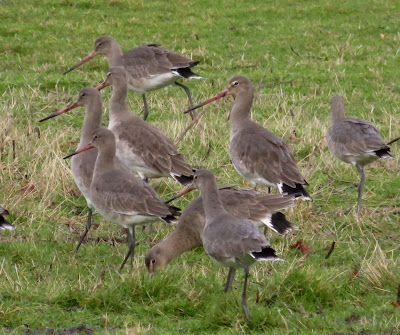The first toads are already out and about, first seen by my wife Nolly - which means the toads must think the "winter" is over! Eight toads were counted on the folly footpath between Firs Chase and The Lane in West Mersea in the evening of Friday 29th.
The toads were trying to home in on the pond located in a nearby garden - a regular breeding site for them.
This is by far the earliest sighting of the year for these toads - they've never been seen in January before heading to this pond. Previously the earliest I've seen them was on the 10th February 2011, which itself was about ten days earlier than usual here.
Having just got into the house from photographing the toads, Nolly then tells me our dog Ben had located a hedgehog in our back garden! After a bit of searching it was relocated under an old wooden crate. After a minute or so, it retreated back under cover and was then left in peace.
Other than seeing a hedgehog dropping in our garden last summer, this hedgehog is the first one seen here for about ten years.
Seeing the toads and the hedgehog on the same mild but blowy evening, makes it feel like spring's arrived!
A windy walk along the Strood seawall on Friday morning provided views of the male stonechat, 2 green sandpipers, rock pipit, 8 reed buntings and a marsh harrier east of the Strood road.
For once the kingfisher at the park pond perched on the near side closest to the hide on Thursday 28th. The orange bill shows up well here indicating this is a female kingfisher, rather than the black bill of a male.
A siskin was seen feeding in the alders with some goldfinches near the park pond on Thursday by Andy Field.
A siskin was seen feeding in the alders with some goldfinches near the park pond on Thursday by Andy Field.
The little owl was seen near the Youth Camp entrance on Wednesday 27th by Martin Cock. The black brant was reported by George Brown near the West Mersea Hard on Wednesday.
At Chapmans Lane 50 fieldfares were in one of the fields on Tuesday 26th.
At Chapmans Lane 50 fieldfares were in one of the fields on Tuesday 26th.


















































